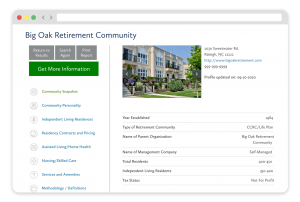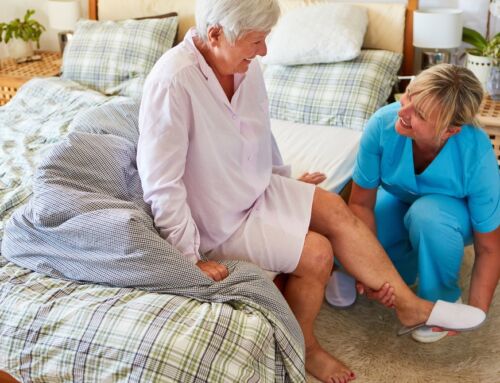In this blog series, we examine the differences between activities of daily living (ADLs) and instrumental activities of daily living (IADLs), and what happens when they become difficult for a person.
Instrumental activities of daily living (IADLs) are the everyday, often more complex tasks that support independent living in the community. This includes things like managing money, shopping, preparing meals, handling medications, using transportation, and keeping the home in order.
As we noted in part 3 in our “ADLs vs. IADLs” series, the ability to perform IADLs often declines before activities of daily living (ADLs) like bathing, eating, and mobility. Evaluating someone’s ability to perform IADLs thus offers valuable insight into their overall functional health. But what happens when IADL tasks become challenging for an older adult, and how might that influence the timing of a senior living move?
>> Related: ADLs vs. IADLs Part 1: What Are Activities of Daily Living and Why Do They Matter?
Common routes when IADLs become difficult
Clinicians use a person’s ability to perform IADLs as a practical measure of how well they can independently manage the cognitive and physical demands of day-to-day life. When the ability to manage IADLs declines, there are typically three paths that can be taken to maintain safety and quality of life, each of which has pros, cons, and tradeoffs. (Not surprisingly, it is basically the same options that people must choose from when ADLs become an issue.)
Unpaid family caregivers
Many families step in to help as a first step when challenges with IADLs arise. Friends, adult children, or a spouse/partner help with tasks like grocery shopping, transportation, paying bills, and medication reminders.
AARP’s 2025 national caregiving data shows that millions of Americans provide unpaid care to a loved one — much of it IADL support — and that caregiving demand has grown in recent years as the baby boomers age. Yes, unpaid family caregivers can enable an older adult who is struggling with IADLs to preserve their autonomy and remain at home longer, but just like helping a loved one with ADLs, there can be tradeoffs. Providing IADL assistance often places physical, emotional, and financial strain on caregivers, and it can create issues if the family caregiver becomes unavailable.
Paid in-home caregivers or community services
Paid personal care workers, homemaker services, grocery/meal delivery, and transportation services can fill many IADL gaps. But keep in mind that coordination of such services is still required, meaning someone needs to hire, schedule, and monitor any in-home helpers. Furthermore, availability and reliability of in-home help can vary based on your location.
So yes, for moderate IADL needs, paid services plus a few home modifications may enable staying at home for a substantial period of time. But it’s essential to know that Medicare generally won’t cover the cost of these personal care services (though some people may be able to utilize Medicaid waivers or Veterans benefits). And as with other private pay caregiving services, the costs can add up quickly. According to the CareScout/Genworth Cost of Care Calculator, in 2025, 44 hours a week of homemaker services (i.e., housekeeping, shopping, cooking, etc.) averages $6,481 per month.
>> Related: Home- and Community-Based Services: An Increasingly Popular Care Option
Moving to assisted living (or possibly a CCRC)
If IADL needs are persistent, complex, or combined with early ADL decline or cognitive concerns, a residential care community may be the best, safest, and/or most economical option. An assisted living community, for example, provides residents with all meals, transportation, medication management, and housekeeping, making daily life far simpler and safer.
For older adults who want to proactively plan for any assistance they may eventually need with IADLs, a proactive move to a continuing care retirement community (also called a CCRC or life plan community) may be a solution. CCRCs offer residents a full continuum of care services, from independent living to assisted living to skilled nursing, often all on one campus.
Choosing a proactive CCRC move while you’re still relatively healthy can reduce the day-to-day stress and burden on you and your loved ones, providing quick access to higher levels of care if IADL and/or ADL needs escalate. However, a CCRC move does typically require financial planning. Additionally, if a person already has care needs, they may not qualify for a Type A/life care or Type B/modified contract at a CCRC.
>> Related: Understanding the CCRC Health Evaluation Requirement: When Is the Right Time to Move?
Practical steps for assessing long-term IADL needs
As we age, it is normal for certain IADLs to become challenging. The decision to stay at home with unpaid or paid help or move to a community setting becomes much clearer when you take an honest look at your current needs, available support, and long-term options. A few key points to consider:
- Take stock of which IADLs you do independently versus which you struggle with. Use this list (and be honest with yourself about your answers):
- Managing money and bills
- Shopping for groceries
- Preparing meals
- Using transportation or driving
- Managing medications and important appointments
- Using a phone or other technology
- Keeping the home reasonably clean
- Try out in-home supports like a paid in-home aide, grocery/meal delivery, and/or a medication management service to see how much difference a bit of help makes.
- Assess sustainability of using unpaid loved ones for support, or check whether paid in-home help is affordable and available long-term.
- Tour CCRCs and/or care communities early while you are still relatively healthy and thus have more options.
- Plan financially by investigating senior living communities’ contract types, any entrance fees, and monthly costs, and be certain you know what services are included in the price (versus what may cost extra).
>> Related: When “What If” Happens: What to Do After a Health Crisis
Acting early on IADLs keeps your options open
Trouble with IADLs is often the earliest practical sign that living independently may eventually require support, and in some cases, significant assistance. It can also be a key indicator that it’s time to make an action plan so that you can age safely, happily, and healthfully, whether that’s in your own home, a CCRC, or a long-term care community such as an assisted living community.
Acting early by honestly assessing your current IADL needs or proactively touring senior living communities while you’re still fairly healthy can actually help preserve your independence and autonomy for longer. And perhaps just as important, taking such proactive steps reduces the likelihood of a crisis-driven move, which can be stressful for you and your loved ones alike.

FREE Detailed Profile Reports on CCRCs/Life Plan Communities
Search Communities






